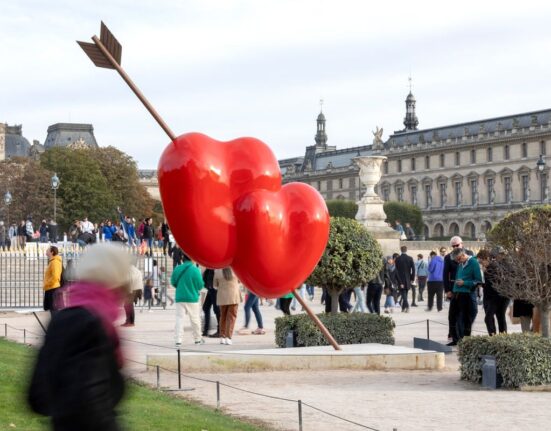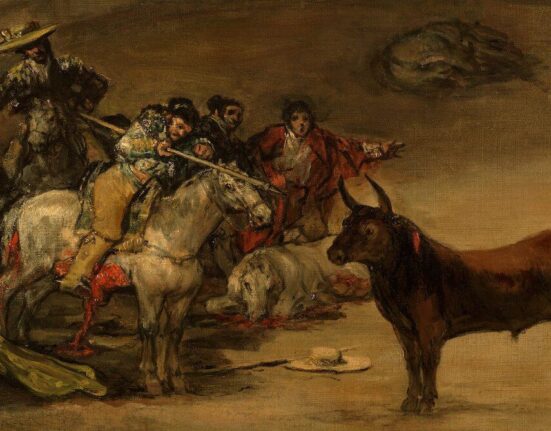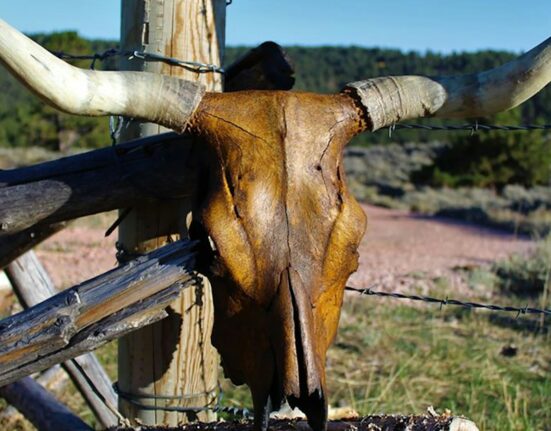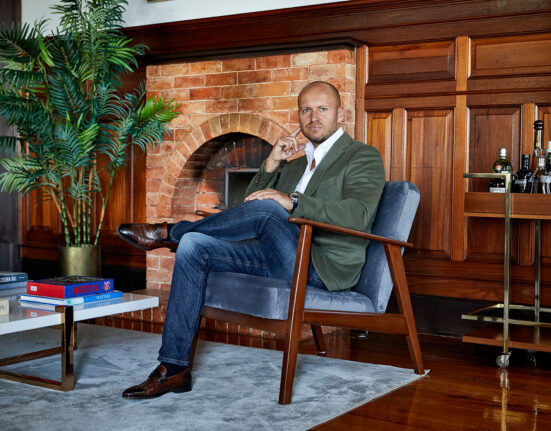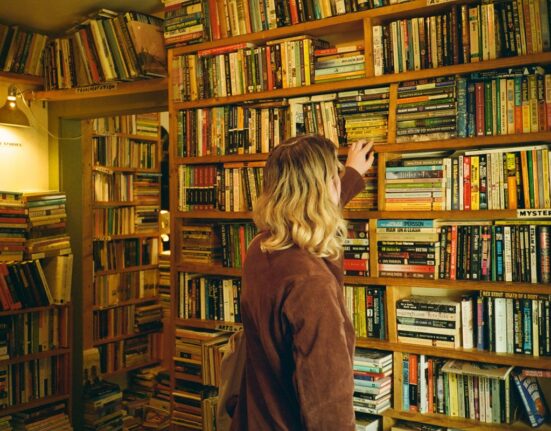A considerable shift occurred in Amanda Baldwin’s practice three years ago. Having risen to prominence working in still-life painting, the New York–based artist turned her attention to landscapes in 2020. “I noticed that many of my still-life or interior scenes had windows in the corner and, over time, I found myself more drawn to the realm beyond the window. I wanted to open it up and go outside,” Baldwin told Artsy in an interview.
Much like her still-life works, Baldwin’s landscapes take a subversive approach, destabilizing the conventions of a longstanding painting genre. Rather than rendering typical vignettes of pastoral beauty, Baldwin’s landscapes depict alluring alternative worlds created by distorting the architecture of reality. Featuring nine new pieces painted over the past year in her studio in Queens, “Wild Weeds,” Baldwin’s first solo exhibition with Public Gallery, affirms this relatively new direction for the artist.
Building on her recent solo presentations with Galerie Marguo in Paris and HESSE FLATOW in New York, the pieces on show at Public Gallery through December 15th are defined by hyperpigmented color palettes, multidimensional depth, and detailed patterning. In them, we see Baldwin delicately balancing seemingly opposing ideas to create worlds that are intrinsically beguiling but, crucially, still believable. In every piece, she thoughtfully incorporates elements of the real and the familiar, along with the imaginary and the unknown, to defy expectations while still portraying the beauty of the natural world.
“I like the idea of things being recognizable but at the same time different in my work,” she said. “There are very familiar elements that one is used to seeing in nature, but they are always a bit skewed, a bit different, or a bit exaggerated.” In Burning the Breeze (2023), for example, swirling pea-green patterns decorate a luminous yellow tree in an exaggeration of tree bark’s naturally occurring spiral grain. The mauve tree that lies behind it, meanwhile, sees Baldwin reimagining the natural fractals of tree branch distribution into an elegant haze of ombré paint.
Her carefully controlled use of color creates a sense of internal coherence within the worlds she creates: “I don’t like to have many different colors in each painting because each painting is its own world,” she said. In Sweeping the Sea (2023), for example, a purple sea bubbles in the foreground, framed by bulbous trees of similar shades that recede into the background, almost undulating like a mirage. By redistricting her palette in this way, Baldwin merges the disparate elements within this work together.
The natural elements in her work, meanwhile, often defy the laws of physics. In Cerulean Monsoon (2023), a glowing moon appears to create a lopsided gravitational pull. Rather than sweeping in towards the shore, as expected, the water seems to be flowing from left to right across the canvas. Much like her use of color, which cements her worlds as alternative realms where flora and fauna have turned psychedelic hues, the oceans, skies, and forests she creates have their own internal logic that differs dramatically from our own.
These subtle and clever subversions of reality, such as switching the direction of the tides, allow the artist to disrupt familiar scenes, making them uncanny. Yet, by resisting pure abstraction and not taking these surreal gestures too far, Baldwin also grounds her work in reality and the landscape genre. “I like the idea of looking at something that’s very familiar and thinking about it in a little bit of a different way,” said Baldwin. “It’s really about trying to view things from a new perspective.”

